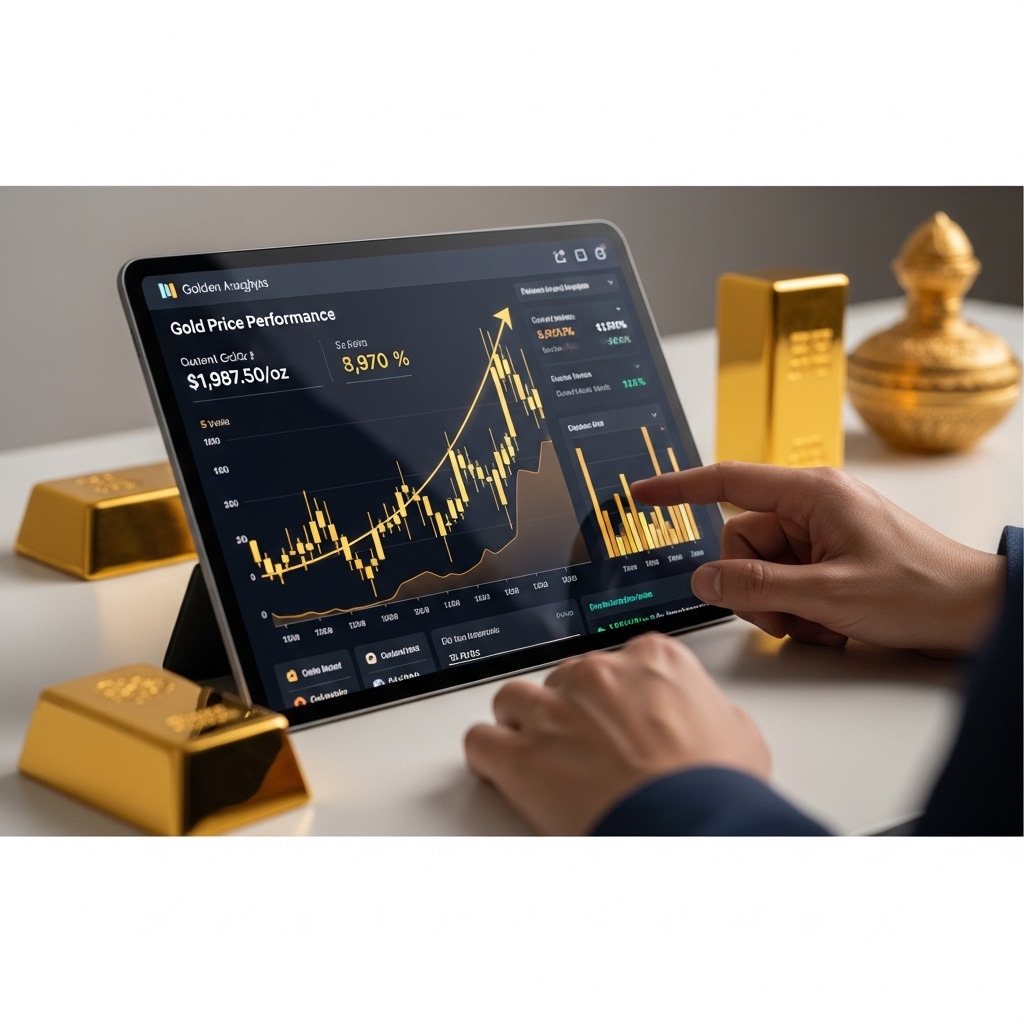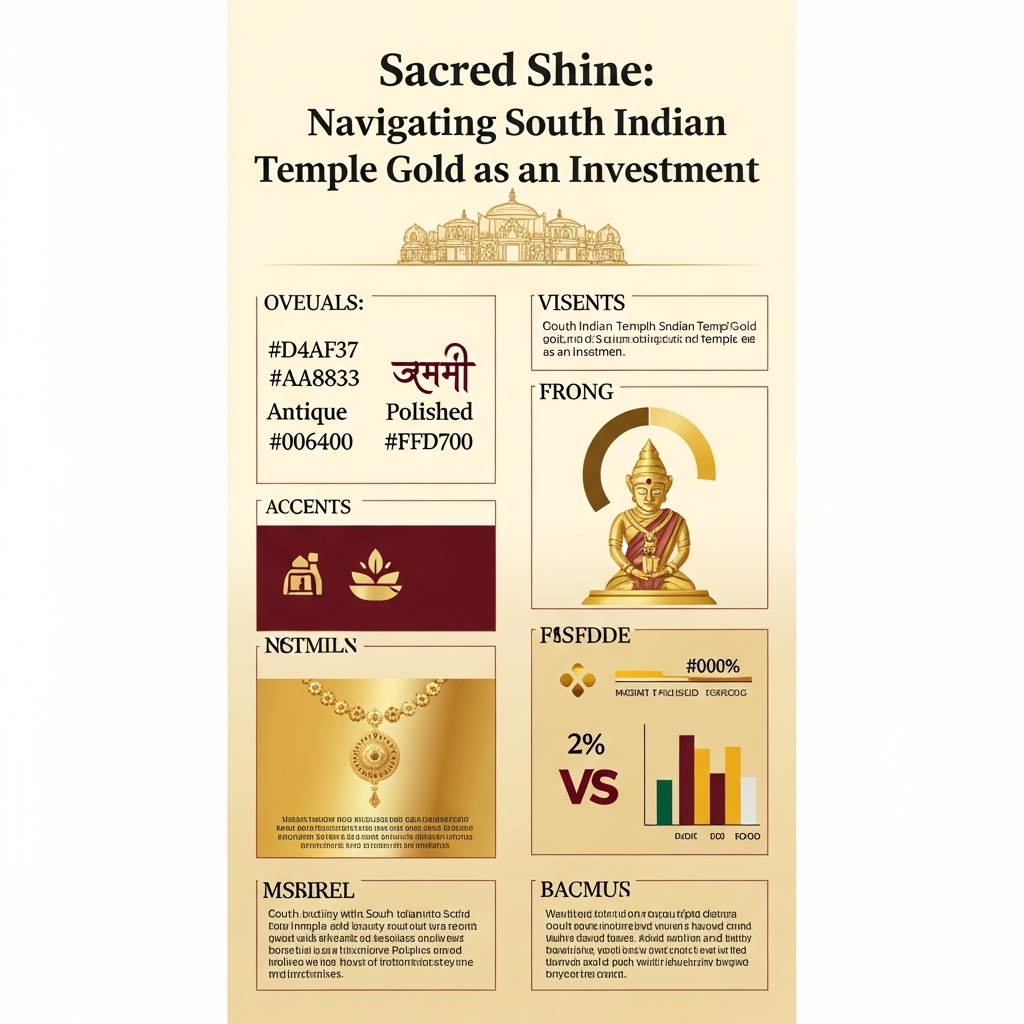South Indian Temple Gold Designs: A Golden Investment Opportunity
In an era of economic uncertainty and volatile markets, gold continues to stand out as a premier safe haven and a powerful portfolio diversifier. With its proven track record of preserving wealth amidst inflation and geopolitical shifts, many investors are now seeking innovative ways to deepen their precious metal holdings. But what if your gold investment could also tell a story, embody profound cultural significance, and potentially command a premium beyond its weight in bullion? This intriguing proposition brings us to the captivating world of South Indian temple gold designs – a unique intersection of heritage, exquisite artistry, and astute financial planning.
This post will delve into the alluring investment potential of South Indian temple gold. Beyond their magnificent cultural symbolism and unparalleled craftsmanship, we’ll analyze the specific market trends influencing these unique assets, highlighting the distinct financial benefits they offer for gold investors looking to diversify. For those seeking robust portfolio diversification and an asset that appreciates from both its intrinsic gold value and its historical-artistic premium, temple gold presents a fascinating opportunity. We’ll equip you with essential buying tips to navigate this niche market, ensuring you make informed, financially sound decisions while appreciating the timeless beauty and tangible value of these extraordinary golden treasures.
Gold Market Analysis and Key Insights
Beyond their profound cultural and religious significance, South Indian temple gold designs also represent a unique intersection of heritage and tangible wealth. Understanding the broader gold market is crucial for those considering these exquisite pieces as an investment.
Gold as a Strategic Diversifier
Historically, gold has served as a reliable hedge against inflation and economic uncertainty. Its intrinsic value offers a sanctuary for wealth during times of currency devaluation or geopolitical instability. As central banks globally continue to diversify reserves and individual investors seek protection from market volatility, gold’s role as a safe-haven asset remains paramount. This makes it an invaluable component for diversifying an investment portfolio, offering stability when traditional assets like stocks or bonds might falter.
Current Market Dynamics
The current gold market exhibits resilience, often influenced by global interest rate expectations, geopolitical tensions, and the strength of the U.S. dollar. While recent months have seen periods of consolidation, underlying demand from central banks and robust consumer interest, particularly from markets like India, provide strong support. Geopolitical events frequently trigger upward price movements, reflecting gold’s status as a flight-to-safety asset.
Investment Benefits & Considerations
Investing in physical gold, such as temple jewelry, offers the benefit of a tangible asset. However, it’s vital to consider factors like storage, insurance, and the premium associated with intricate designs. Unlike bullion, jewelry includes making charges and design premiums that impact its pure investment value. For strategic investment, ensure authenticity and purity (e.g., 22K or 24K gold). While traditional gold jewelry carries strong cultural value, understanding its resale value against pure gold prices is key.
Expert Recommendations
Financial advisors often recommend allocating a modest portion (typically 5-15%) of a diversified portfolio to gold for long-term wealth preservation. For those drawn to temple gold, consider it primarily as an artistic and cultural asset, with its investment potential as a secondary benefit due to the craftsmanship premium. For pure investment, gold ETFs or digital gold platforms offer alternatives with lower overheads. Always purchase from reputable jewelers to ensure purity and transparent pricing.

Gold Investment Strategies and Options
For those drawn to South Indian temple gold designs, understanding various gold investment avenues is crucial beyond cultural appreciation. Physical gold, including jewellery, coins, and bars, offers tangibility and a deep cultural connection. While jewellery holds immense aesthetic and symbolic value, it incurs significant making charges and Goods and Services Tax (GST), impacting its pure investment return. Gold coins and bars, however, offer better value for investment due to lower premiums, but demand secure storage.
Alternatively, digital and paper gold options provide modern, hassle-free investment avenues. Gold Exchange Traded Funds (ETFs) and Gold Mutual Funds offer exposure to gold price movements without physical storage concerns, allowing for systematic investments. Sovereign Gold Bonds (SGBs), issued by the government, are particularly attractive, providing semi-annual interest payments, capital gains tax exemption on maturity, and eliminating storage risks.
Risk assessment is vital. Gold traditionally acts as a strong hedge against inflation and market volatility, making it a valuable portfolio diversifier. Financial advisors often recommend allocating 5-15% of a total investment portfolio to gold. Compared to physical gold’s storage and purity concerns, digital options and SGBs generally offer greater security, liquidity, and cost-efficiency.
Market timing is challenging; a long-term perspective is generally more effective than short-term speculation. Consider systematic investment plans (SIPs) for digital gold or purchasing during market dips to average out your buying cost. Combining cultural appreciation for South Indian gold with a sound, diversified investment strategy ensures your gold acquisitions are both meaningful and financially prudent.
Market Performance and Outlook
Historically, gold has been a remarkably resilient asset, particularly cherished in India where its cultural and auspicious significance fuels continuous demand. It has consistently served as a powerful hedge against inflation and economic uncertainties, preserving wealth across generations and demonstrating steady long-term appreciation, often outperforming other asset classes during periods of global instability.
Currently, the gold market exhibits a strong upward trend, driven by global economic instability, persistent inflationary pressures, and geopolitical tensions that encourage a flight to safe-haven assets. Within India, demand for physical gold, especially intricate temple designs, remains exceptionally robust, sustained by traditional practices and its deep cultural resonance during festivals and weddings, underscoring its unique market dynamics.
Looking forward, the outlook for gold appears optimistic. Ongoing central bank acquisitions and sustained retail demand from major markets like India and China are expected to provide foundational support. While short-term price fluctuations may occur due to shifts in interest rates or the strength of the US dollar, gold’s intrinsic value and its established role as a wealth preserver suggest continued appeal, ensuring that South Indian temple gold designs remain both a cultural legacy and a sound investment.
Frequently Asked Questions About Gold Investment
What is the primary investment value of South Indian temple gold designs?
The investment value primarily lies in the gold content itself. While intricate designs hold immense cultural and aesthetic value, the making charges (design and craftsmanship costs) are generally not recoverable upon resale. Investors focused on maximizing gold value often prefer plain gold or bullion.
How can I verify the purity and authenticity of temple gold jewellery for investment?
Always look for the BIS (Bureau of Indian Standards) Hallmark, indicating 91.6% purity (22 Karat gold). Purchase from reputable, long-standing jewellers who provide a detailed purity certificate. This ensures you’re getting the stated gold weight and quality.
Do temple gold designs appreciate in value beyond the gold’s market price?
Typically, no. The appreciation is almost solely tied to the fluctuating market price of gold. While their cultural significance is immense, specific design appreciation to an extent that significantly increases resale value beyond the gold content is rare, unless the piece becomes a collectible antique.
Are heavier or simpler temple gold designs better for investment purposes?
Heavier pieces inherently contain more gold, making them better for investment. Simpler designs often have lower wastage or making charges, meaning a higher percentage of your cost goes directly into gold weight. For pure investment, gold coins or bars are often preferred due to minimal making charges.
What should gold investors consider regarding the cultural symbolism of these pieces?
While deeply rooted in South Indian heritage and auspicious traditions, cultural symbolism primarily adds aesthetic and emotional value. Investors should understand that this cultural significance does not directly translate into higher resale value compared to the gold’s intrinsic worth. Your investment is in the metal, not the symbolism’s premium.

Final Thoughts on Gold Investment
We’ve journeyed through the exquisite world of South Indian temple gold designs, understanding their profound cultural symbolism and vital buying tips. For investors, the key takeaway is clear: these pieces offer more than just intrinsic gold value; they are wearable art, steeped in heritage. Ensuring purity, authentic craftsmanship, and reputable sourcing remains paramount for a sound investment that truly appreciates over time.
Our final recommendation is strong: embracing South Indian temple gold is a unique way to diversify your portfolio. It’s not merely a hedge against inflation but an acquisition of cultural legacy, adding an unparalleled dimension to your wealth. Don’t just invest in gold; invest in history, art, and timeless beauty. Begin exploring these magnificent designs today and elevate your investment portfolio with a touch of divine elegance.